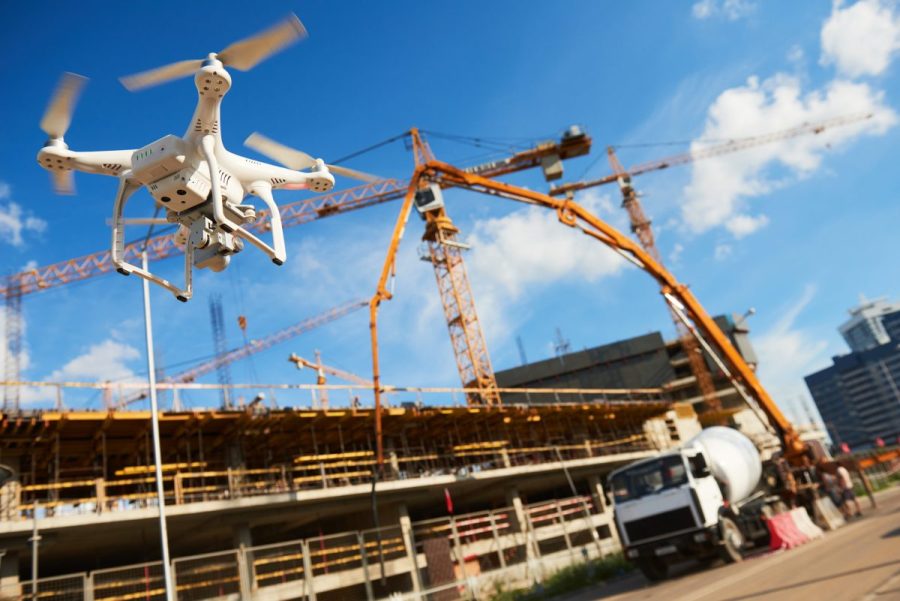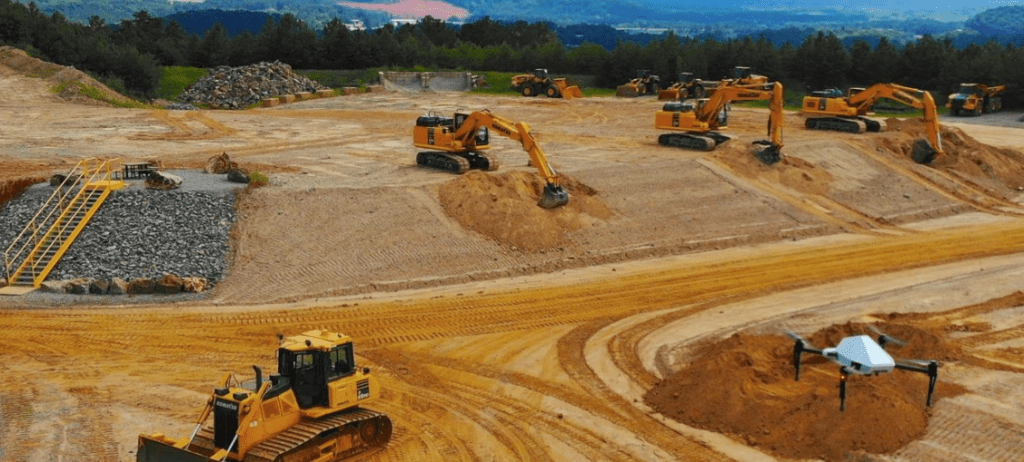Construction Site Progress Reporting
Surveying can be extended throughout the lifecycle of a job to assess and record changes and progress at the jobsite over time, providing clear insights on what’s going on at a very detailed level. Visualisation of the jobsite can be provided from unique angles not available to typical boots on the ground. Drones will typically be flown bi-weekly, weekly or monthly. These flights can be automated and tuneable to meet the contractor’s specific needs.
“Regular site progress reports offer context and add new dimensions to construction projects. However, it’s difficult to create consistent site imagery over the course of a project. Progress Photos solves this by creating a visual timeline of a project from start to finish. In doing so, it saves costs, keeps stakeholders informed, and addresses safety risks.”
MIKE WINN, CEO OF DRONEDEPLOY

Evaluating Safety Issues.
As another example, safety managers use the drone imagery to evaluate safety situations at the jobsite. For instance, at one jobsite there was a safety ticket issued that involved a crane; historical drone-derived data revealed the crane hadn’t been properly fastened. Of course, this opens up the door for the future use of artificial intelligence and machine learning technologies to be deployed to scan the imagery to proactively identify potential safety hazards before accident occurs.
Inventory Management.
A large manufacturer of cement keeps ready mix stored and stockpiled at 400 facilities located around the United States, each strategically located close to construction areas. Trucks are constantly arriving to take cement away, as raw materials in parallel arrive to make sure available supply meets demand. Without knowing exactly how much material is stockpiled, the manufacturer runs the risk of overbuying. On the other hand, if supply runs out, then the manufacturer incurs the additional cost and delay of sourcing material at the next closest and available facility. To reduce these risks, this manufacturer flies a drone monthly to gather volume information for all its stockpiles. Materials are also codified, so specific tonnage information is provided as well.
Improving Accuracy and Safety.
A traditional method to derive volume measurements is to have a person climb stockpiles, taking measurements with a tape measure. Unfortunately, this older analog approach results in errors of 200% or more. Worse yet, liability and safety risks are introduced by having people walk around and on stockpiles.
Cut and Fill.
Accurate estimation of an earthmoving project can be the difference between being a profitable and an unprofitable job. Overestimating the amount of material to move may result in a bid that is too high. Underestimating will result in more material moved than the contractor is paid for. Underestimate the cut versus fill and there is a risk of purchasing more material than needed. Overestimating the cut versus fill may result in paying someone to remove material that doesn’t exist. To reduce these risks, drones can be used for cut and fill in earthwork projects, bridging the gap between making volumetric measurements and doing topography surveys. Combined with photogrammetry, drone-derived images can be used to understand how much material exists, and, consequently, how much material needs to be removed or brought in.

We’re always pleased to provide you with a quote but bear in mind that before we accept any job and sometimes before we can provide an appropriate quote, we may need to ask you some questions. There are many regulations that apply to the operation of RPAS (remotely piloted aircraft systems). we’re required by CASA to ensure that we at all times operate in a manner that is safe and legal.
